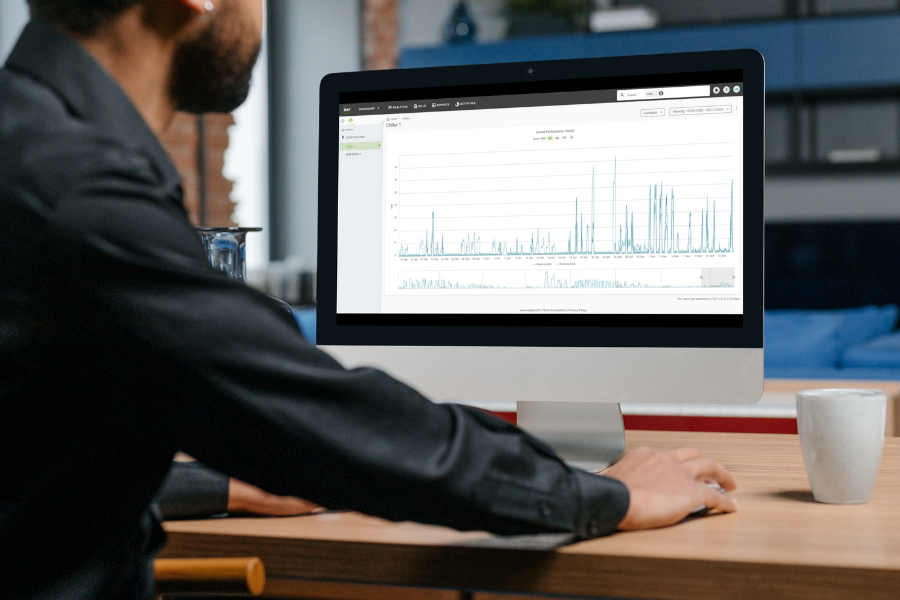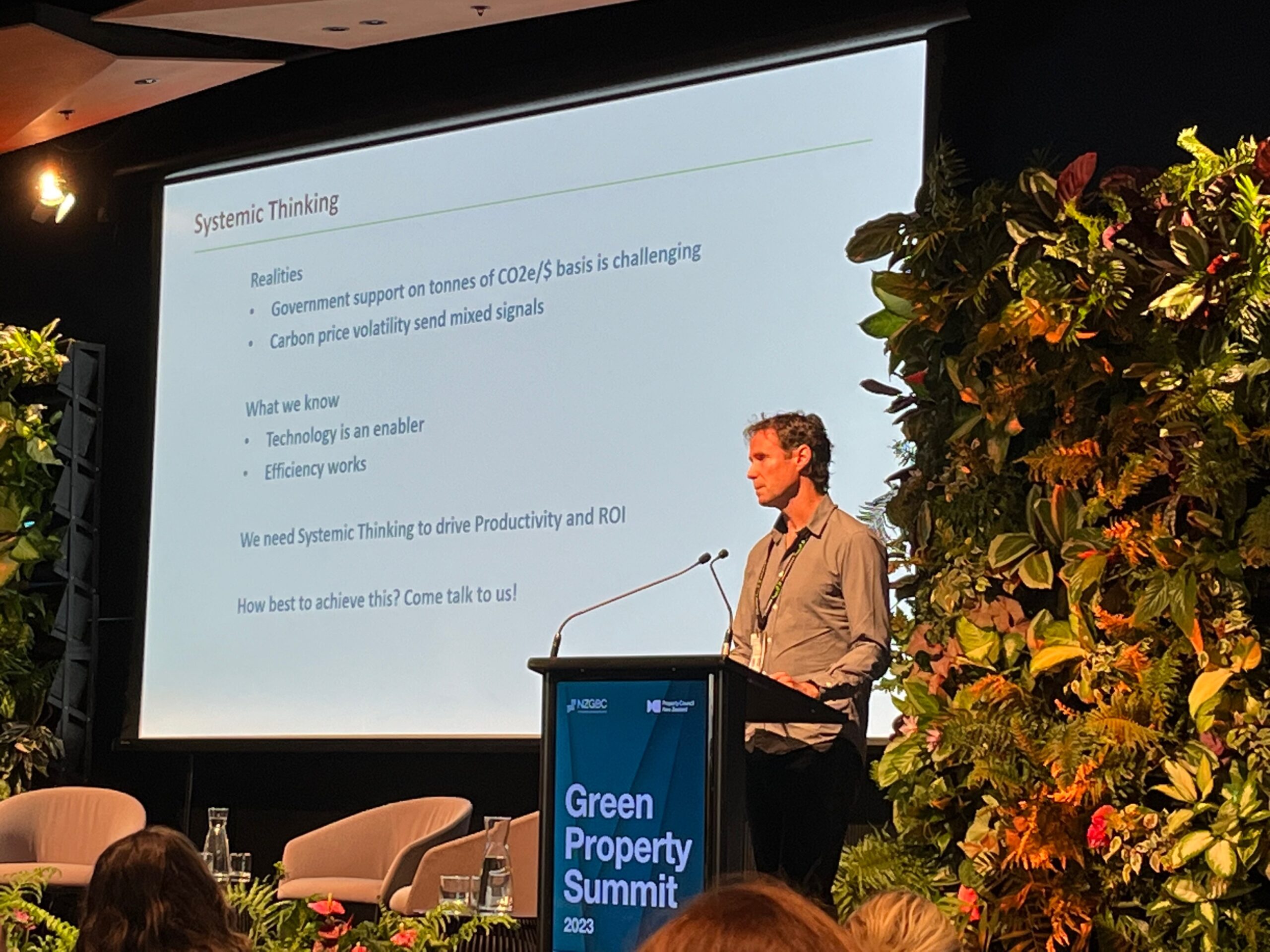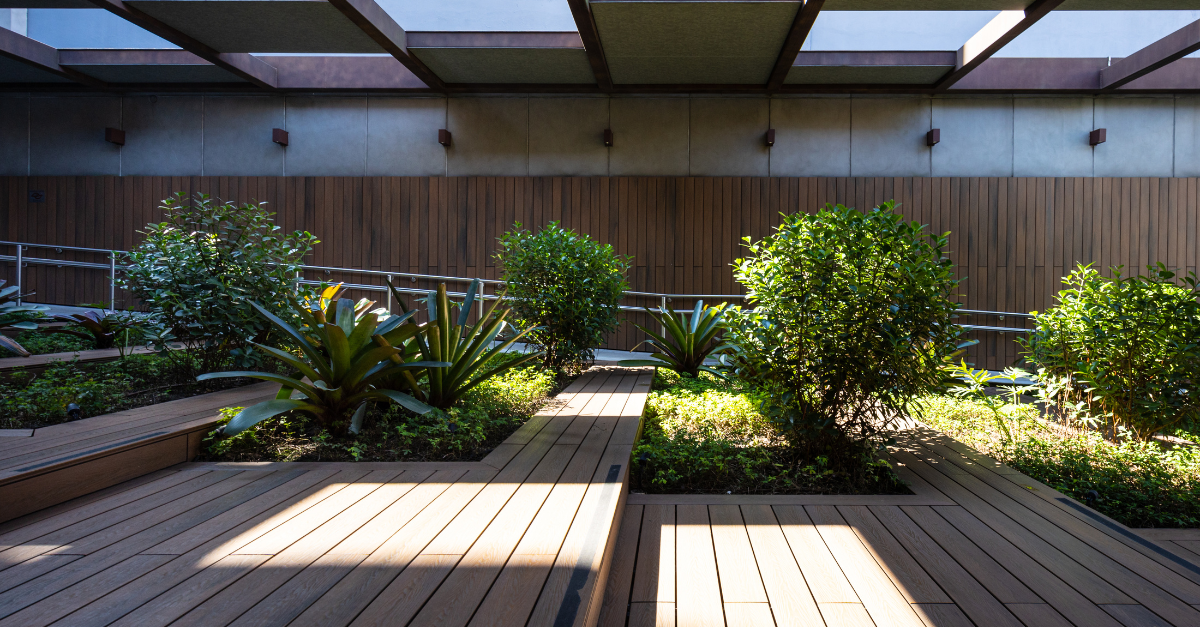Book a meeting if you would like to know more about any of the services or solutions you have seen.
NABERSNZ Ratings.
Prove your building’s quality.
Outstanding NABERSNZ ratings for your buildings.
ESP provides the experience and tools to efficiently achieve the NABERSNZ ratings required by high-quality tenants and government agencies.
Our clients have avoided
0,000,000kg of carbon emissions and saved
$0,000,000 in utility costs.
Trusted by outstanding businesses.
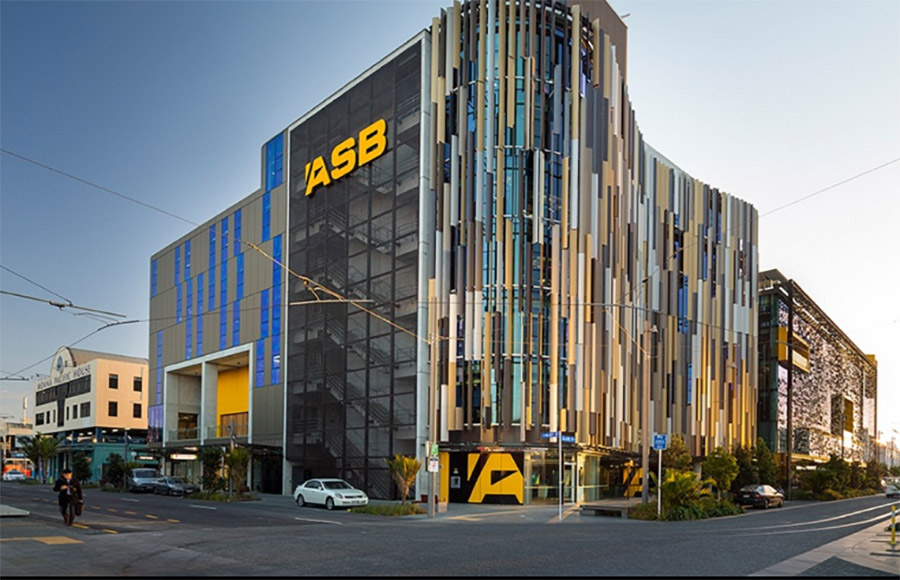
Independent efficiency ratings.
Why NABERSNZ?
As pressure increases to reduce emissions and improve efficiency, a NABERSNZ rating offers a detailed and objective measure of your building’s energy performance.
We’re the largest assessor of NABERSNZ ratings in New Zealand. We’ve combined energy expertise with cutting-edge technology to create a thorough and cost-effective assessment process that’s used by some of the country’s largest organisations.
“We believe adopting environmentally sustainable practices like NABERSNZ is the right thing to do and we see it as a win-win outcome on every level.”
Ryan Carter
Portfolio Manager, 151 Property
What is NABERSNZ?
NABERSNZ helps you to accurately measure, understand and communicate the environmental performance of your building, while identifying areas for cost savings and future improvements.
Operated by the New Zealand Green Building Council (NZGBC) on behalf of the Energy Efficiency and Conservation Authority, NABERSNZ gives office and government buildings or individual tenancies an annual rating of zero to six stars on how well they use energy. The ratings must be updated yearly.
Types of NABERSNZ ratings.
There are 3 types of NABERSNZ ratings, suitable for different occupants and businesses.
Base build.
A base build rating measures the energy performance of a building’s core services, such as lifts, stairwell lighting, common toilets, air conditioning, ventiliation, etc.
Suitable for: commercial property owners & property managers.
Tenancy.
A tenancy rating measures the floors or areas occupied exclusively by a tenant, including energy use such as computers, lighting, data centres, and staff kitchens.
Suitable for: commercial building tenants.
Whole building.
A whole building rating combines base building and tenancy ratings.
Suitable for: commercial property owners & property managers.
Why ESP?
We make NABERSNZ simple.
To achieve efficient and cost effective results, a range of services and technology are required to measure, monitor and achieve and sustain quality NABERSNZ ratings. ESP’s integrated service offering and extensive experience allows us to deliver more effective energy and environmental results, whether you are looking for a whole building, base build or tenant rating.
We’ve refined our process over hundreds of sites, ensuring that you get accurate, actionable insights through a straightforward, thorough methodology.
Step 1: Monitor.
NABERSNZ assessments demand data which is difficult to access without the right tools. Our team handles the admin for you, collecting everything required for an accurate rating on your behalf.
If data is unavailable or inaccessible, our team will work with you to find cost-effective ways to source it through hardware metering, invoice analysis or liasing with stakeholders.
Step 2: Assess.
One of our expert engineers visits your site to apply exclusions and validate data based on floor area, occupancy hours, and more. This ensures that only your own energy use is considered for your overall score.
We then process and submit your data for an initial NABERSNZ rating. Congratulations! But the journey doesn't stop there.
Step 3: Improve
Once you've received your first NABERSNZ rating, our team will highlight key areas of improvement, suggesting swap-outs and upgrades to secure fast, cost-effective efficiency wins.
We can then help you develop a tailored long-term energy management plan for continuous optimisation and performance improvements year after year.
Step 4: Repeat
NABERSNZ ratings are updated every year, providing opportunities to improve your score every 12 months and secure a stronger competitive edge.
Our team can return regularly and repeat our process, reviewing your overall efficiency profile, providing support and guidance on fresh opportunities, and assessing your building for a new (and improved) NABERSNZ rating.
Client engagements.
Don’t just take our word for it.
Here are some real world examples of what NABERSNZ clients have achieved with our help. If they sound like the results you want, let’s talk.
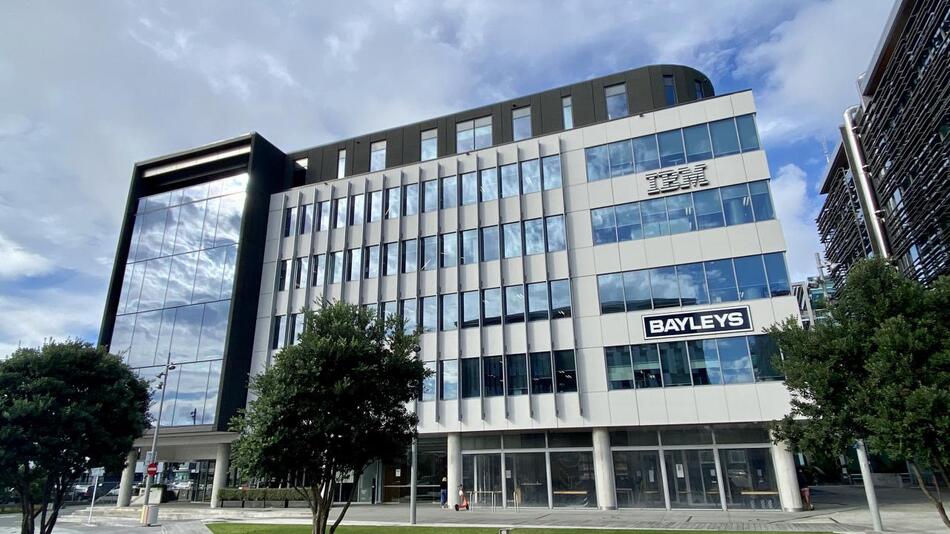
NABERSNZ – Bayleys House
The list of sustainable credentials for Bayleys House continues to grow with not one but two NABERSNZ ratings.
Background
Managed by a partnership of Australasian asset managers; 151 Property, and Bayleys Property Services, optimising building performance and offering healthy, comfortable workspaces for tenants is top of the agenda.
NABERSNZ assessments were sought for a variety of buildings as a means to ensure consistent, accurate and verifiable results across a broad range of criteria and to enhance sustainability.
Solution
ESP engaged with the building management partnership, utilising cutting-edge technology and monitoring software to quickly and efficiently secure strong NABERSNZ ratings for the properties. The ratings were a mixed of tenancy and basebuild.
Results
A collaborative sustainable approach between landlord, property managers and tenants has delivered a high 4.5 star NABERSNZ base building rating for Bayleys House in Auckland waterfront’s dynamic commercial VXV Precinct.
Realty group Bayleys, who leases its head office in the building, has also earned a 4 star NABERSNZ rating for its tenancy – reflecting its strong commitment to the environment.
NABERSNZ assessor Hong Lee says high quality mechanical services including a fresh air system with a connected heat pump, have been instrumental in the achievement of a 4.5 star NABERSNZ rating for Bayleys House. The integrated heat pump provides consistent heat efficiency and reduces the need for electrical heating to kick in when the building cools down in winter.
Bayleys House has 70 energy monitoring meters spread across the building.“We can monitor down to 15 minute segments of energy use and you can even see the impact on air conditioning services if a staff member comes to work at 3am,” says Hong.
He says well-designed tenancy office services including LED lighting and occupancy sensors which switch off after 30 minutes, have driven the 4 star NABERSNZ tenancy score for Bayleys head office. A regime of normal daytime working hours has also propelled the Bayleys head office’s optimum energy performance.
Bayleys House also features the use of View, allowing stakeholders and staff to instantly understand how far they’ve come – and how far there is to go – on their journey towards meaningful sustainability.
CBRE
Challenge
CBRE have teams throughout the country, managing buildings on behalf of landlords. CBRE works to improve the value of the buildings managed however staying on top of large and distributed portfolios means the team need to be as productive as possible.
Solution
CBRE and ESP have worked closely for a number of years, continually auditing and monitoring an increasing range of buildings to ensure they are energy efficient. As landlords start to see the advantages a program of NABERSNZ ratings have started, meaning the CBRE portfolio can compete for high quality, including government, tenants.
Outcome
Having worked together for a while means the CBRE portfolio are achieving above average NABERSNZ results. The CBRE team are able to be more productive and can communicate the results to landlords, backed by proof, including the use of View, a set of live sustainability dashboards that provide instant and in-situ updates on the business’ sustainability journey so far.

IAG
Challenge
IAG were looking to achieve a NABERSNZ rating for their building at 1 Fanshaw Street, Auckland feeding into their energy efficiency and scope 2 carbon emission reduction. As a joint engagement Colliers, the Property Manager were also looking to improve asset value. The building originally had a 5-star NABERSNZ, however this had lapsed and energy usage was increasing at 9% per year.
Solution
Metering was installed to a standard that could achieve a Basebuild NABERSNZ rating. The metering provided visibility to optimise operation of the mechanical plant. ESP was engaged to complete a monitoring and targeting programme that identified energy and costs savings opportunities for the building.
Outcome
Working together, the building has now achieved a Basebuild NABERSNZ rating of 5.5 Stars rating. This rating is amongst one of the highest published basebuild ratings.

NABERSNZ – Bayleys House
The list of sustainable credentials for Bayleys House continues to grow with not one but two NABERSNZ ratings.
Background
Managed by a partnership of Australasian asset managers; 151 Property, and Bayleys Property Services, optimising building performance and offering healthy, comfortable workspaces for tenants is top of the agenda.
NABERSNZ assessments were sought for a variety of buildings as a means to ensure consistent, accurate and verifiable results across a broad range of criteria and to enhance sustainability.
Solution
ESP engaged with the building management partnership, utilising cutting-edge technology and monitoring software to quickly and efficiently secure strong NABERSNZ ratings for the properties. The ratings were a mixed of tenancy and basebuild.
Results
A collaborative sustainable approach between landlord, property managers and tenants has delivered a high 4.5 star NABERSNZ base building rating for Bayleys House in Auckland waterfront’s dynamic commercial VXV Precinct.
Realty group Bayleys, who leases its head office in the building, has also earned a 4 star NABERSNZ rating for its tenancy – reflecting its strong commitment to the environment.
NABERSNZ assessor Hong Lee says high quality mechanical services including a fresh air system with a connected heat pump, have been instrumental in the achievement of a 4.5 star NABERSNZ rating for Bayleys House. The integrated heat pump provides consistent heat efficiency and reduces the need for electrical heating to kick in when the building cools down in winter.
Bayleys House has 70 energy monitoring meters spread across the building.“We can monitor down to 15 minute segments of energy use and you can even see the impact on air conditioning services if a staff member comes to work at 3am,” says Hong.
He says well-designed tenancy office services including LED lighting and occupancy sensors which switch off after 30 minutes, have driven the 4 star NABERSNZ tenancy score for Bayleys head office. A regime of normal daytime working hours has also propelled the Bayleys head office’s optimum energy performance.
Bayleys House also features the use of View, allowing stakeholders and staff to instantly understand how far they’ve come – and how far there is to go – on their journey towards meaningful sustainability.
CBRE
Challenge
CBRE have teams throughout the country, managing buildings on behalf of landlords. CBRE works to improve the value of the buildings managed however staying on top of large and distributed portfolios means the team need to be as productive as possible.
Solution
CBRE and ESP have worked closely for a number of years, continually auditing and monitoring an increasing range of buildings to ensure they are energy efficient. As landlords start to see the advantages a program of NABERSNZ ratings have started, meaning the CBRE portfolio can compete for high quality, including government, tenants.
Outcome
Having worked together for a while means the CBRE portfolio are achieving above average NABERSNZ results. The CBRE team are able to be more productive and can communicate the results to landlords, backed by proof, including the use of View, a set of live sustainability dashboards that provide instant and in-situ updates on the business’ sustainability journey so far.

IAG
Challenge
IAG were looking to achieve a NABERSNZ rating for their building at 1 Fanshaw Street, Auckland feeding into their energy efficiency and scope 2 carbon emission reduction. As a joint engagement Colliers, the Property Manager were also looking to improve asset value. The building originally had a 5-star NABERSNZ, however this had lapsed and energy usage was increasing at 9% per year.
Solution
Metering was installed to a standard that could achieve a Basebuild NABERSNZ rating. The metering provided visibility to optimise operation of the mechanical plant. ESP was engaged to complete a monitoring and targeting programme that identified energy and costs savings opportunities for the building.
Outcome
Working together, the building has now achieved a Basebuild NABERSNZ rating of 5.5 Stars rating. This rating is amongst one of the highest published basebuild ratings.
Frequently Asked Questions
A building with a cafe can be NABERSNZ rated. The assessor will confirm whether the cafe is used for only tenant purposes, our whether it is available to the public. So it can be determined whether the area and energy consumption should be included or excluded.
No, All three NABERSNZ rating types (base building, tenancy and whole building) rate the ongoing energy efficient performance of the building. In reality, basebuild rating results can be capped in some instances due to particular design limitations. However, this must be accounted for in any renewal or refresh works.
Yes, that is correct. New Government leases must be 4 star or greater already. These increase over time. More information can be found here.
NABERS in Australia provides ratings including water. NABERSNZ currently is energy efficiency only, and there are no plans currently to introduce water ratings. The Green Star Performance rating tool captures water use.
How should gas and water consumption be converted to KWH/sqm for Greenstar rating purposes?
Typically we will submeter the relevant HVAC/basebuild loads on each floor to account for these loads in the calculation. This metering is common in many buildings we monitor.





















